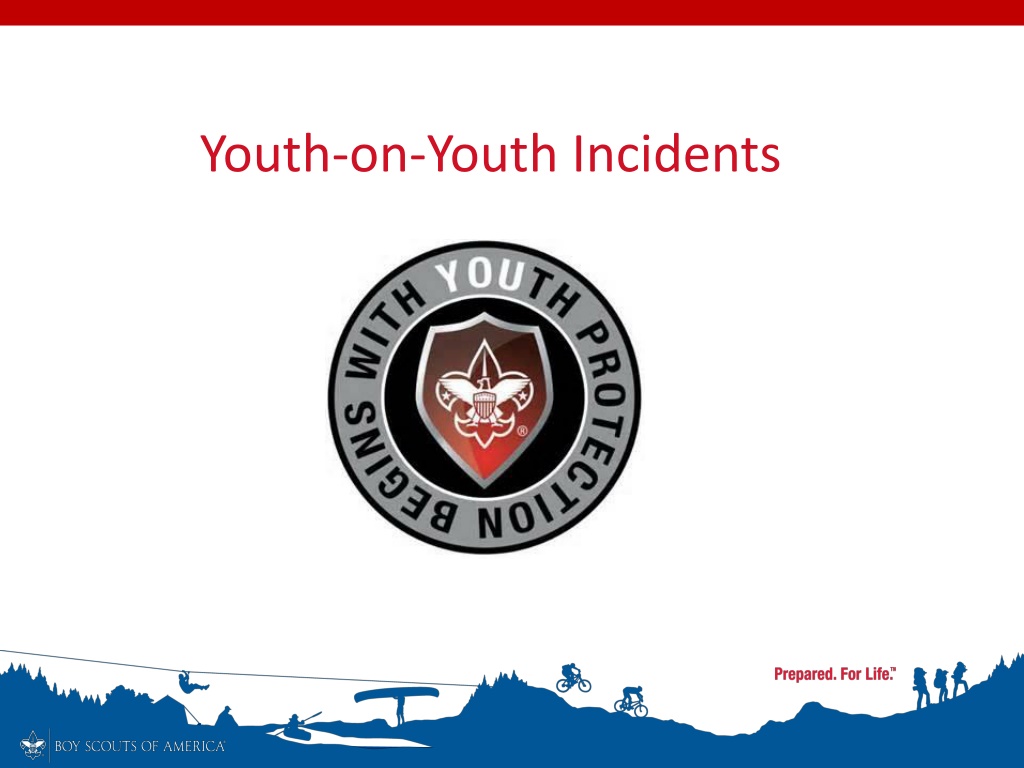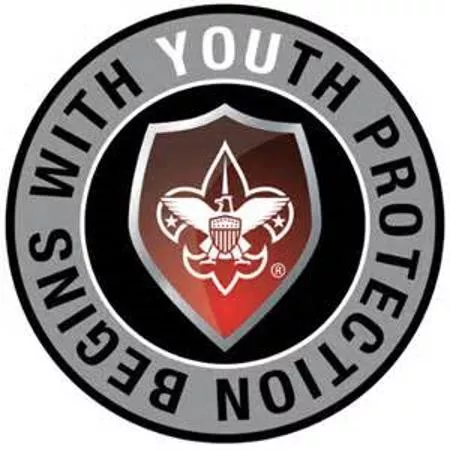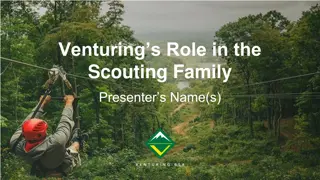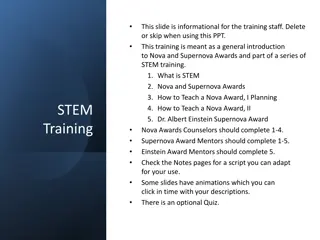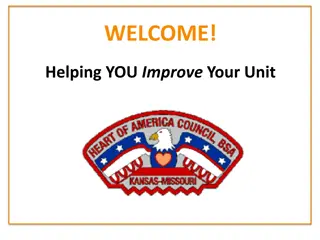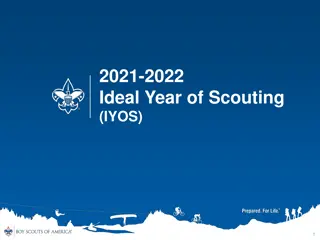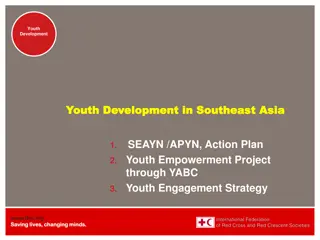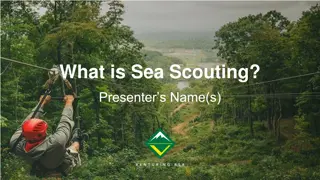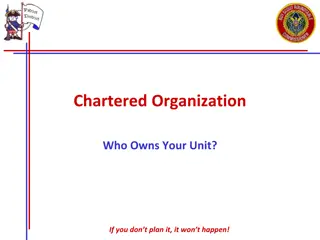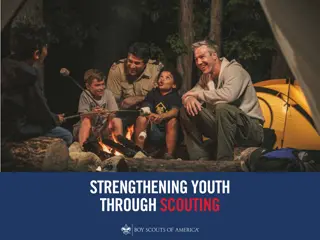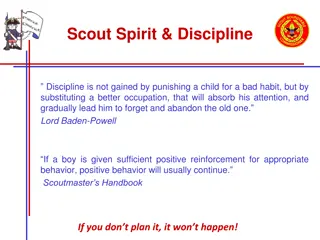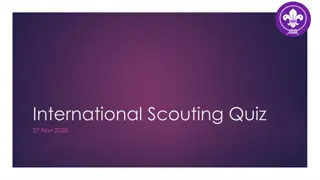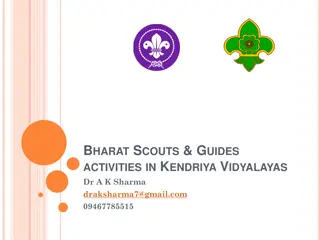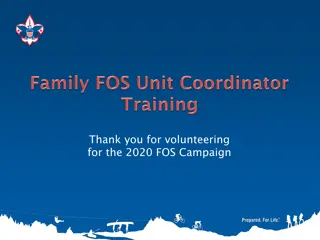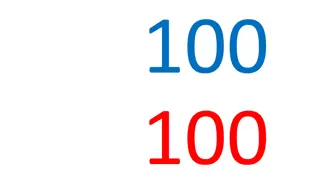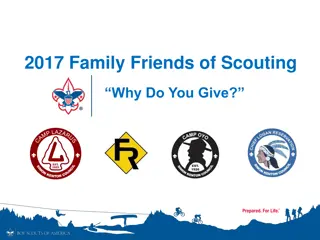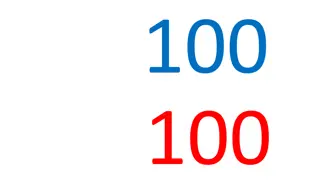Youth Protection Strategies for Scouting Programs
Improve leaders' ability to prevent, recognize, and respond to inappropriate youth behavior, including sexual misconduct, within Scouting programs. Emphasize proactive measures such as pre-camp meetings, code of conduct development, and immediate intervention. Plan in advance for training sessions, review of policies, and active risk monitoring during camp activities. Maintain a culture of accountability and prioritize youth protection at all times.
Download Presentation

Please find below an Image/Link to download the presentation.
The content on the website is provided AS IS for your information and personal use only. It may not be sold, licensed, or shared on other websites without obtaining consent from the author. Download presentation by click this link. If you encounter any issues during the download, it is possible that the publisher has removed the file from their server.
E N D
Presentation Transcript
Youth-on-Youth Incidents 11/18/2024 1
Objective The purpose of this course is to improve how leaders prevent, recognize, and respond to inappropriate youth-on-youth behavior including inappropriate sexual behavior that might occur in any Scouting program. 11/18/2024 2
BSA Policy All adult leaders and youth members are responsible for youth protection. Unit leadership is responsible for unit discipline and initial response to all youth protection incidents. 11/18/2024 3
Solutions Conduct pre-camp meetings with youth Work with units and youth to develop a unit/camp code of conduct Conduct pre-camp meetings with camp staff on roles and responsibilities in responding to youth protection incidents Set the example from the beginning Intervene immediately when there is a concern 11/18/2024 4
Three months in advance, plan to: Review the Time to Tell video facilitated with emphasis on camp/program activity scenarios 11/18/2024 5
One month before the trip, plan to: Review Scouting s Barriers to Abuse and the code of conduct with youth and adults Review the registration and Youth Protection training status of all adults Meet with youth leaders and review policies and Barriers to Abuse and impress upon them their role as upstanders 11/18/2024 6
On arrival, plan to: Remind adult and youth leaders to be active observers of applicable risk factors Remind youth of the buddy system and their duty to watch out for other Scouts, especially in the latrine, the food line, and while tenting Remind youth to bring any behavior or safety concerns to the attention of the Scoutmaster or a trusted adult leader Review the code of conduct and lights-out in tents policies 11/18/2024 7
During camp, plan to: Set the example and hold other leaders accountable for doing the same Address observed or suspicious behavior immediately Insist on full compliance with BSA youth protection and reporting guidelines 11/18/2024 8
BSA Policy Youth leadership is monitored by adult leaders. 11/18/2024 9
Solutions Adequate leadership including the investigation of sights and sounds Adults are always serving in a guidance capacity and may never abdicate that responsibility Anticipating, identifying, and monitoring high-risk areas specific to programs 11/18/2024 10
BSA Policy No hazing. No bullying. Discipline must be constructive. Scout Oath and Scout Law. Code of conduct. 11/18/2024 11
Tradition vs. the BSA Program Solutions No initiations or similar rites of passage Give youth permission and encouragement to report while not being viewed as a tattletale Evaluation/discussion of camp traditions with camp director or Scout executive Pre-camp preparation by Scoutmaster; discussion regarding unauthorized traditions at camp Past/known inappropriate traditions need to be replaced by Scout-like activities Explain bystanders and upstanders 11/18/2024 12
Group Bullying Solutions This is not Scout-like behavior and may result in immediate removal from camp activities and Scouting, and, if it reaches the level of abuse, will be reported to law enforcement See it, report it, remove the perpetrators immediately Pre-camp meeting to explicitly state behaviors that will not be tolerated Emphasis on large buddy groups Bystander/upstander responsibility Recognize those who report and upstanders Require more adult supervision in target areas (latrines, changing areas, showers) 11/18/2024 13
Lack of Respect/Harassment of Co-ed Staff Solutions Scouters should spell out what is expected of all youth 11/18/2024 14
BSA Policy All adult leaders and youth members are responsible for acting in accordance with the Scout Oath and Scout Law. Cyberbullying, theft, verbal insults, drugs, alcohol, and pornography have no place in the Scouting program and may result in revocation of membership. 11/18/2024 15
Solutions Pre-camp meeting to explicitly state behaviors that will not be tolerated Make it clear to youth when lights-out is Adequate leadership including the investigation of sights and sounds during the night Spontaneous two-leader bed or tent checks 11/18/2024 16
BSA Policy Inappropriate use of smartphones, cameras, and imaging or digital devices is prohibited. 11/18/2024 17
Solutions Do not allow devices in restrooms Confiscate devices immediately if an incident occurs Notify the target s parents Notify the Scout executive Notify the appropriate law enforcement office 11/18/2024 18
Possible indicators of abuse include: Sudden withdrawal from activities the youth previously enjoyed Reluctance to be around a particular individual, especially in the absence of others Changes in behavior or in school performance, including lower grades 11/18/2024 19
Scoutings Barriers to Abuse http://www.Scouting.org/Training/ YouthProtection.aspx 11/18/2024 20
Responding to Policy Violations and Abuse There are two types of Youth Protection related reporting: When you witness or suspect any child has been abused or neglected, you ll need to follow the BSA s Mandatory Report of Child Abuse policy. When you witness a violation of the BSA s Youth Protection policies, you ll need to follow the BSA s Reporting Violations of BSA Youth Protection Policies guidelines. 11/18/2024 21
Steps to Reporting Child Abuse: Ensure the child is in a safe environment. In cases of child abuse or medical emergencies, call 911 immediately. In addition, if the suspected abuser is in the Scout s family, you are required to contact your local hotline. Notify the Scout executive or his or her designee during his or her absence. 11/18/2024 22
Questions 11/18/2024 23
